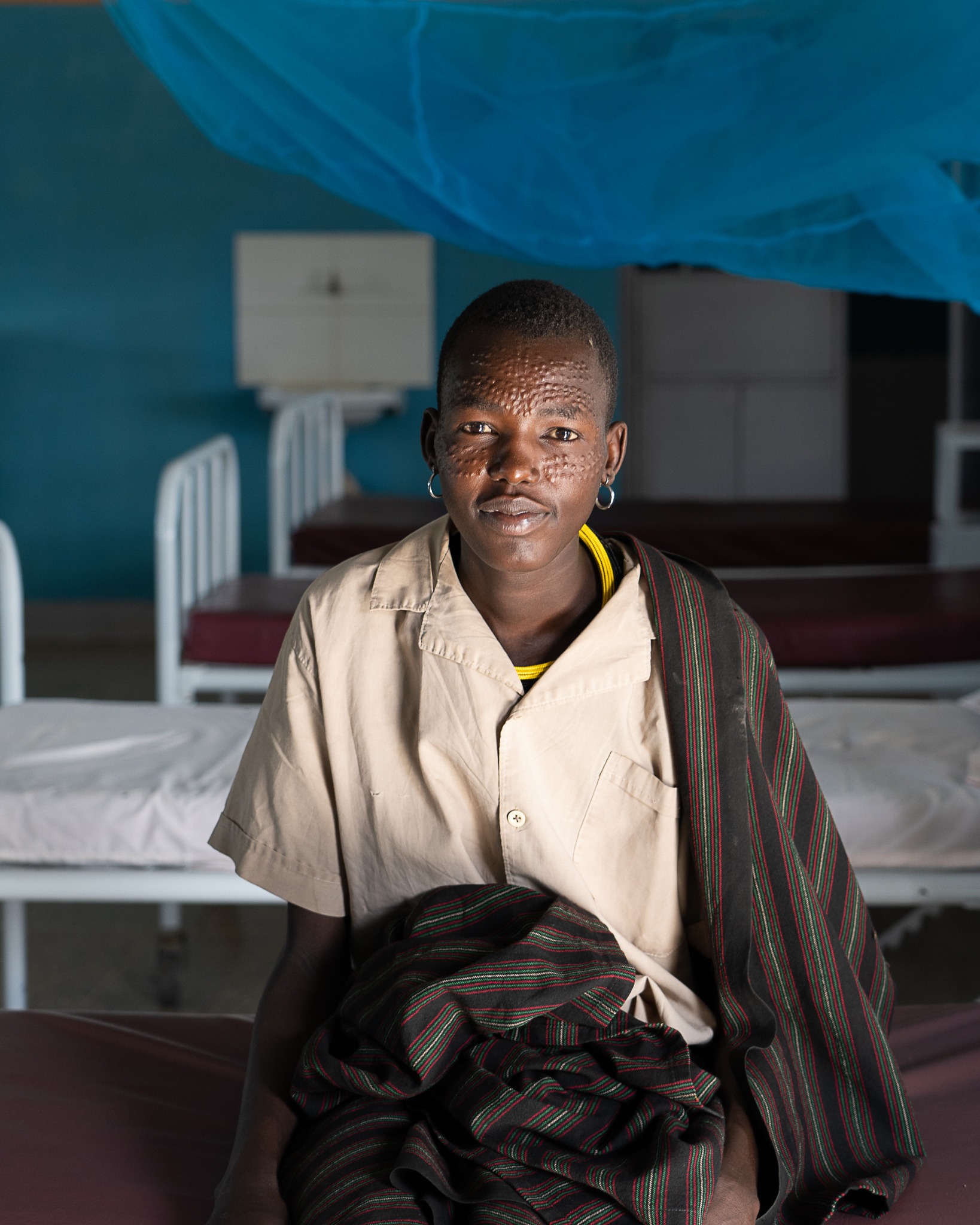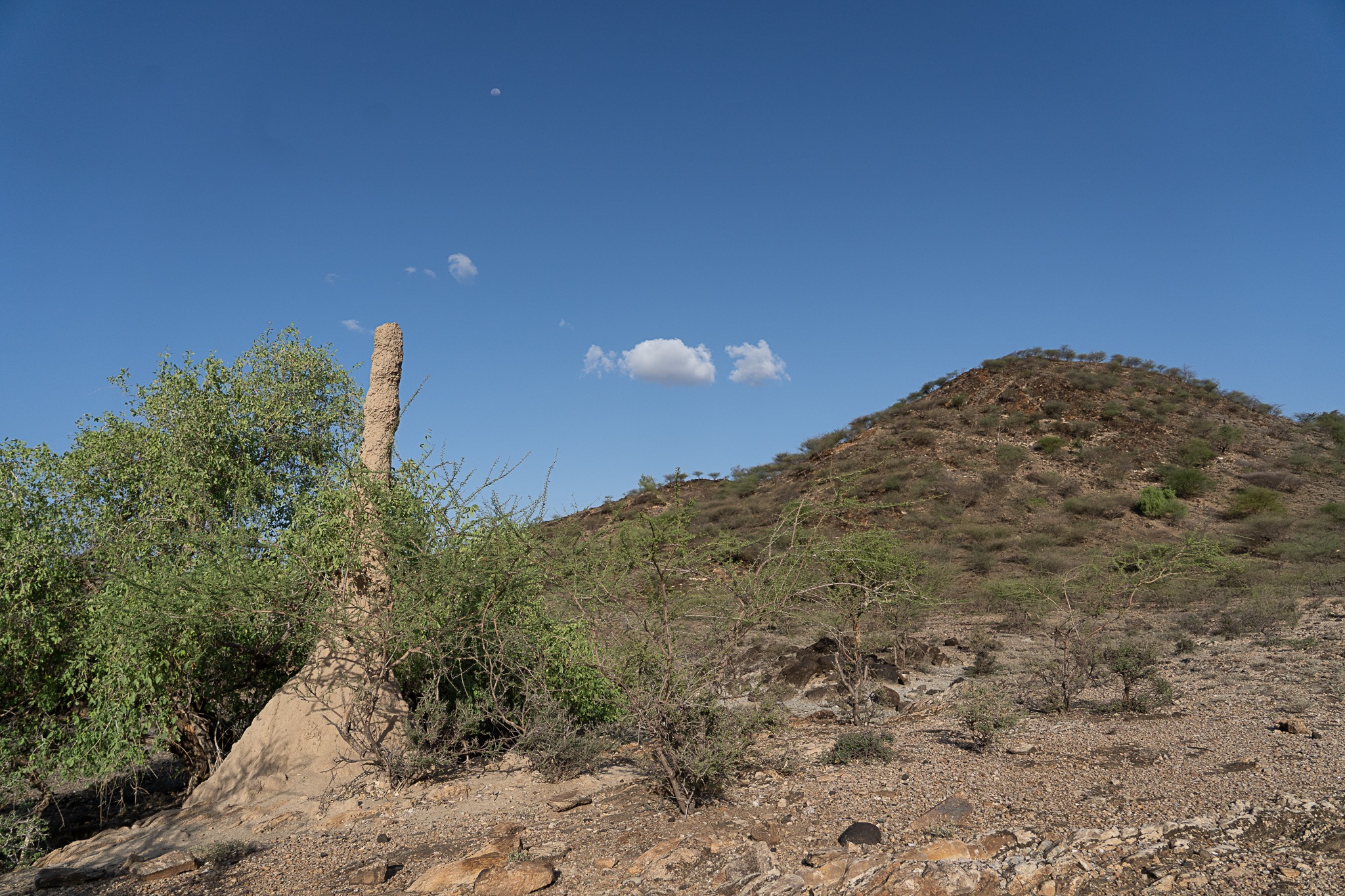
Loyele Ikaale (left) on day 5 of treatment at Namoruputh Health Center.
Flagship Fund Fills Critical Funding
Gaps in East Africa

Loyele Ikaale is 15 years old and responsible for watching over his family’s herd of cows. As he led his livestock through the arid region of Turkana, Kenya, the constant buzzing and occasional bite from sand flies was more than just an annoyance — it was an encounter with the world’s most deadly NTD.
Visceral leishmaniasis (VL), also known as kala-azar, is second only to malaria as the most lethal parasitic disease. The infection attacks the liver, spleen, and bone marrow. Without treatment, death is all but certain.
At first, Loyele and his family thought his illness was malaria, a common occurrence in rural regions like Turkana. As he became sicker, he was brought to a health facility in Namoruputh, Kenya on the back of a motorcycle.
“When I was brought here, I was very ill. I had a lot of pain here on my shoulders, back pains, and my legs were very weak. There was also a severe headache. I was completely bedridden,” Loyele explains.
Amidst the COVID-19 pandemic in April 2021, the UK government halted its funding to treat VL, as part of a larger cut to international aid from its Foreign Commonwealth and Development Office budget (FCDO). As funding was diverted away from VL, the END Fund’s Flagship Fund, designed to be flexible and nimble, with co-investment from The ELMA Foundation and Margaret A. Cargill Philanthropies, leveraged its regional experience and strong relationships with national NTD programs to support four organizations delivering VL prevention and treatment in Sudan, South Sudan, Ethiopia, Uganda, and Kenya.
The Flagship Fund continued to work with countries to ensure adequate VL drug supplies by sharing up-to-date medication stock status, both at the national and subnational levels, and to monitor the dispatch of supplies by the WHO to countries and health facilities. This commitment reinvigorated the Flagship Fund’s strategy to ensure the threat of VL does not continue to be ignored.
Nearly five million people in Kenya are at risk of VL, and Turkana is one of the country’s hotspots.

An ant hill in Northern Kenya where the flies carrying VL live
Receiving quick diagnosis and treatment is critical to a patient’s survival, but this is especially hard in this remote and conflict-prone region where health facilities may only be reachable after many days on foot.
These programs help reduce the fatality rate from 95% to less than 2% by providing treatments while also alleviating debilitating symptoms like sores, weight loss, weakness, fever, enlarged spleen or liver, bleeding, and other infections.
Luckily for Loyele, he was brought to a facility that was equipped with the diagnostic tools and medicines to help him. He began a seventeen-day course of injections with antimonial drugs to fight the infection and received nutritious drinks to help his body heal from the anemia and weight loss caused by the illness.
